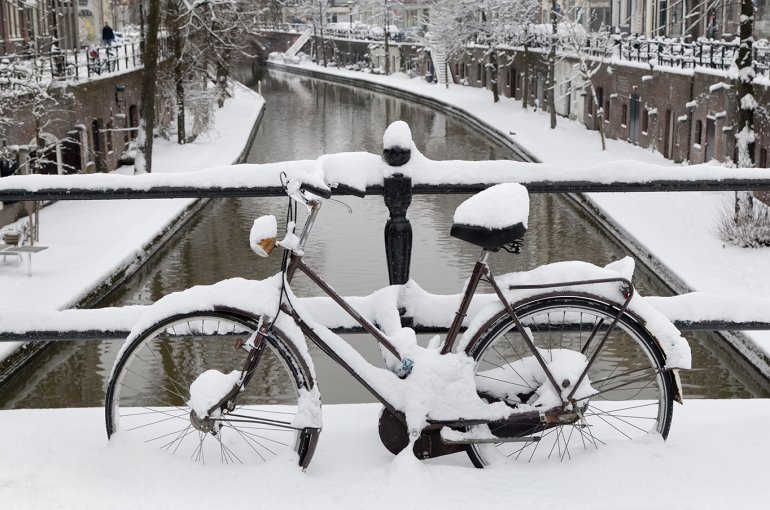Will we still be able to celebrate a White Christmas 50 years from now?
Jet stream produces mild, stormy winters

Aarnout van Delden (IMAU) studies recent developments in the climate. He primarily uses historical data for temperature and precipitation, and correlates them to changes in wind and water currents. Van Delden looks back to historical weather data to predict - in a general way - the Christmas weather of the future.
“On average, we have a White Christmas once every seven years. Except for the winters of 2009/2010 and 2010/2011, which were very snowy, we’ve actually had a lot of mild winters over the past few years. That is all because of the jet stream, the band of high wind that circles the pole from west to east across the Northern Hemisphere. Over the past few years, the westerly wind has been stronger, which means that the Netherlands has had milder winters due to the warmer wind coming off of the sea. In other parts of the continent, those stronger westerly winds can have the opposite effect, such as in eastern Canada, where the continental climate becomes more extreme and the winters get colder.”
Ozone layer
The stronger jet stream is due to the cooling of the ozone layer. In winter, the north pole cools off because the sun doesn’t shine and more heat escapes from the atmosphere. That cooling causes a differentiation in pressure, which results in a stronger jet stream. That has meant more extreme weather over the past few years, with more frequent storms. The average precipitation is rising much faster than the temperature. We now get an average of 850 mm per year, compared with 750 mm per year a century ago. It doesn’t rain more often, but it when it does it rains harder.”
We've seen more extreme weather over the past few years, with more frequent storms.
More sunshine
“The jet stream isn’t the only thing that has a direct effect on the weather. We have observed that the air in western Europe has become much cleaner over the past 30 years. That is due to the dramatic decrease in sulphur dioxide, which is released when coal is burnt. So we have a lot less fog than before, and we see the sun shining more often, which of course only adds to global warming.”
Elfstedentocht
“The fact that we have fewer Elfstedentocht ice skating events is not only due to the milder winters, but also because more warm water is released into ditches and canals, which of course has an influence on the thickness and condition of the ice. Another issue is that so many people want to participate that the ice needs to be a certain thickness to hold their weight. In 2012, the ice wasn’t considered safe enough, but in the early 20th century the event may have been held anyway under the same conditions.”

